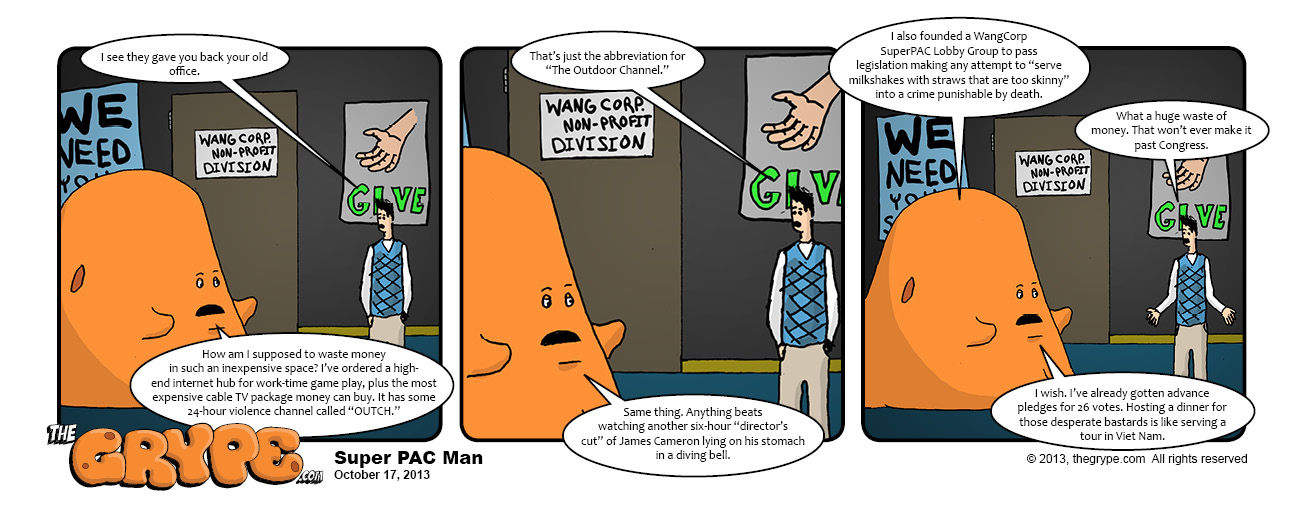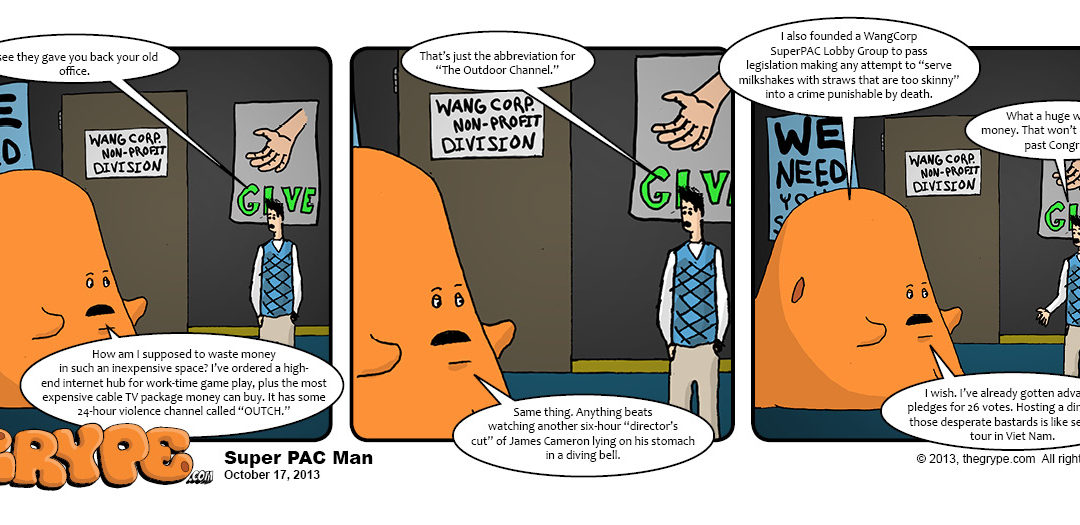 Now that our government has “re-opened” after our recent two-week-long political mediapalooza, the sky-is-falling crowd gets to choke on the revelation that the whole Congressional fracas was essentially a non-event (apart from some screwed-over Federal employees, hungry government aid recipients, and angry vacationing veterans, that is). It’s supremely uninspiring to watch both sides claim victory and congratulate themselves on their last-minute ability to grudgingly perform the barest minimum requirements of their job. Wow. Impressive.
Now that our government has “re-opened” after our recent two-week-long political mediapalooza, the sky-is-falling crowd gets to choke on the revelation that the whole Congressional fracas was essentially a non-event (apart from some screwed-over Federal employees, hungry government aid recipients, and angry vacationing veterans, that is). It’s supremely uninspiring to watch both sides claim victory and congratulate themselves on their last-minute ability to grudgingly perform the barest minimum requirements of their job. Wow. Impressive.
On the corporate whistleblowing front, a whole batch of current and former JC Penney’s employees recently came forward to drop a dime about the seriously dishonest pricing schemes in use by their company. JC Penney’s refers to it as “promotional pricing,” actually a bait-and-switch scam wherein employees are first ordered to double the price of an item…only to immediately “mark it down” to a “sale” price. But the mark up of the merchandise is often higher than the mark down, resulting in customers paying MORE for items that are supposedly on sale. Investigators discovered the JC Penney’s “sale prices” weren’t “sale prices” at all— they were identical to (or even ABOVE) suggested manufacturer retail prices.
JC Penney’s defends the practice as a common strategy in the retail industry, often used in business and taught at business schools around the world. But JC Penney’s takes it a (sneaky) step farther by first marking prices UP before they put those items “on sale.” A true promotional pricing model involves actually discounting prices to attract customers and entice them into purchasing a specific brand or product. That’s perfectly legitimate; except that’s not what JC Penney’s is allegedly doing. The employees who blew the whistle on JC Penney’s made it clear they felt what they were doing was unethical. Marking a product up by 100% before putting it on sale at even 50% off does not offer customers an actual bargain. Since bargain shoppers tend to pay more attention to the “sale” sign than to the actual price numbers, the practice takes unfair advantage of consumers lured into making a purchase simply because they believe they are buying a legitimately discounted item.
Not all states have laws protecting consumers against such practices, and corporations have invented scores of ways to scam customers out of every conceivable penny. Here are a few, quoted from NBC’s Today show blog Rossen Reports, who recently covered the JC Penney’s scandal:
1. Bait and switch – In this scam signs for sale prices are placed over an item that is not for sale. The customer selects the item without double checking and ends up paying full price at the counter. Always read sale signs carefully and compare them to what you’re buying.
2. Double charges, over rings, charging for products not purchased – The best way to beat register scams is to take the time to read your receipt. If you have a question about additional charges, no matter how small, take it up with the manager or courtesy desk. Corporations understand that if they overcharge each customer by only $0.25 most customers won’t bother to ask about it.
3. Gift cards – Every time you leave a little extra change on a gift card, whether it’s two pennies or two dollars, you’re making a donation to corporate America. Always use up any gift cards in full, or better yet, don’t buy them or give them as gifts.
With the Christmas shopping season rapidly approaching, it’s a good idea to protect yourself (and your wallet). The government is back in business, and so is the retail store industry. And both are looking for a quick score at your expense.

